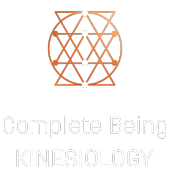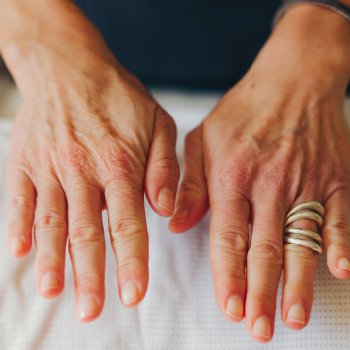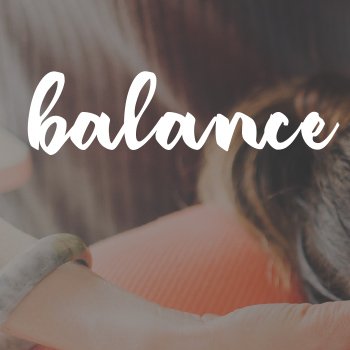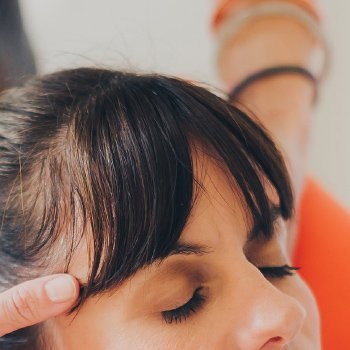
Vagus Nerve - Switching on your relaxation response.
Often referred to as the healing nerve, the Vagus Nerve is involved in vital aspects of our overall wellbeing, mental health and physiology of the body; it relaxes and calms our system.
Derived from Latin, vagus - meaning wandering - it is a rather appropriate description as the Vagus Nerve constitutes the longest cranial nerve, extending from the head (via neck, heart, lungs) to the abdomen, thus innervating there areas and enabling communication to and from the brain.
The Vagus Nerve carries a number of important functions, contributing to the Autonomic Nervous System (ANS), specifically its parasympathetic division.
What is the role of the ANS?
The ANS regulates the activities of our internal organs (such as lungs, heart, blood vessels), glands (sweat or salivary) as well as visceral activities (via stomach/intestines) - it does this involuntarily and automatically. It consists of two main divisions:
- Sympathetic Nervous System (SNS) - mobilises the body’s fight/flight response e.g. heart rate increases; muscles contract
- Parasympathetic Nervous System (PNS) - restores the body to a calm state and activates the 'rest & digest' response e.g. heart rate decreases/muscles relax.
In essence, the ANS helps us to respond to our external environment while regulating our internal environment.
The fine balance of the SNS & PNS.
The key is a balanced rhythm between the sympathetic and parasympathetic system – the former allows us to be alert, focused and pay attention to what is going on in our surroundings (and potentially respond to threats), the latter enables us to reset, wind down and calm our system.
Using a car analogy, the SNS is the accelerator whereas the PNS represents the brakes. Of course, you cannot drive a car without either.
Many factors can affect this balance (and therefore body function) such as stress, emotional upset, life pressures or trauma. If our nervous system is well regulated, we can easily regain calm and equilibrium after a stressful experience, however if our system is out of balance, the SNS can become ‘stuck on’ or potentially, ‘stuck off’ i.e. we dip below the normal level.
What would this look and feel like? In a stuck on mode we may experience anger, anxiety or restlessness whereas in a stuck off mode we may feel apathetic, numb, fatigued or disconnected. We might be swaying between these two states - sound familiar?
Therefore, activating the PNS is beneficial as it can help decrease feelings of anxiety, stress, overwhelm or similar emotional states – it generates calming energy, strengthens our immune system, lowers blood pressure and uplifts our mood.
This is why the Vagus Nerve plays such a critical role – as a mixed nerve, it carries sensory information from the organs it innervates back to the brain, and also sends motor signals from the brain to the organs to provide instructions. Interestingly, approximately 80% of the fibres report up to the brain and only 10% communicate down.
There is also a small percentage of vagal pathway information that relates to the skin of the inside of the ear as well as the muscles at the back of our throat and vocal cords, giving our voice pitch/ tone. This contributes to engage socially with others by regulating our tone e.g. sounding calm and articulate; conversely, if we are stressed, our voice can appear monotonous, short or choppy (which can have an impact on our conversations).
In summary, the Vagus Nerve:
- Regulates digestion, heart and respiratory rate
- Modulates the gut-brain-axis by connecting the enteric nervous system (governs the function of the GI tract) to the brain
- Plays a role in decreasing inflammation by sending anti-inflammatory signals to regulate the body's immune response
- Provides movement functions to the muscles in the neck responsible for swallowing and speech
- Influences certain reflexes such as sneezing, swallowing or coughing
- Sends taste information to the brain (together with 2 other cranial nerves)
- Decreases vascular tone, lowering blood pressure.
How can we activate the Vagus Nerve and the PNS?
- Deep abdominal breathing – breathe deeply into the belly so it expands with each inhale and gently contracts as you exhale
- Specific breathing techniques:
- Extending the exhalation compared to the inhalation e.g. breathe in on the count of 4, breathe out on the count of 6 (find a rhythm that feels good for you)
- Left nostril breathing as practised in Yoga - breathe in through the left nostril, breathe out through the right nostril - note, alternate nostril breathing, will balance both, the PNS and SNS
- Gently touching your lips with one or two fingers - PNS fibres run through the lips (thus eating can be an unconscious emotional coping strategy)
- Gently stroke down the sides of your neck - the Vagus Nerve runs between the internal jugular vein and carotid artery
- Humming, chanting or singing - helps to tone the Vagus nerve (including gargling)
- Meditation & mindfulness practices - including focusing on a soothing mantra such as 'I am calm' or choose an affirmation that resonates
- For more information on Mantras, take a look at my article by clicking here: Mantras - simple yet powerful
- Gentle exercise, stretching or Yoga - note aerobic exercise such as running stimulates the SNS
- Practise visualisation - incorporate the activation of all senses i.e. visualise yourself in a peaceful place, imagine hearing the sound of a bubbling brook or the chirping of birds, feel the light breeze touch your skin
- Spend time in nature or do something that brings you joy.
Remember, it is all about balance.
As always, listen to your body and observe whether this is beneficial for you. Everyone has different needs and if in doubt, conduct further research or consult with your healthcare professional.
Other resources from the Complete Connection library you may find useful - click on the link to access the article:











